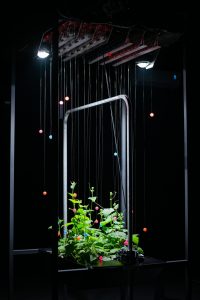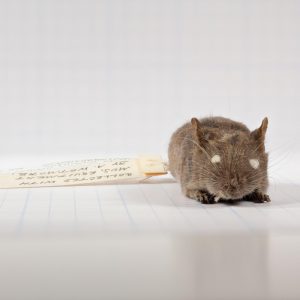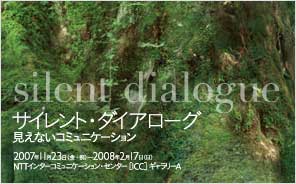 Just as i was panicking that i wouldn’t be able to post anything today because i had spent most of my time doing some silly shopping, enters Vicente Gutierrez. Our Tokyo correspondent went to visit the latest exhibition at ICC, swift as the light he wrote a few lines about it and thus saved my life. I like drama, you might not so let’s go straight to his report from the show:
Just as i was panicking that i wouldn’t be able to post anything today because i had spent most of my time doing some silly shopping, enters Vicente Gutierrez. Our Tokyo correspondent went to visit the latest exhibition at ICC, swift as the light he wrote a few lines about it and thus saved my life. I like drama, you might not so let’s go straight to his report from the show:
Currently at the NTT InterCommunication Center[ICC] in concrete-laden Tokyo is an exhibit devoted to nature’s inter-relationships within the ecosystem we share with plants and animals.
Focusing on the interaction between plants, animals and humans, or this ‘invisible communication’ of nature which our senses might not always perceive, the works in the Silent Dialogue exhibition exhibited make those signals visual and audible through the use of biosensors as well as other algorithm-based software programs. Relying on such simulations, the works on display are a true fusion of science, design and art and provide a glimpse into the secret lives of plants while revealing more about the human effect and affect within the ecosystem we share. Investigating how plants, animals, or insects communicate and behave offered new perspectives to the effect of making us more apt to the signals our environment sends in an era of increasing interaction from humans and technology.
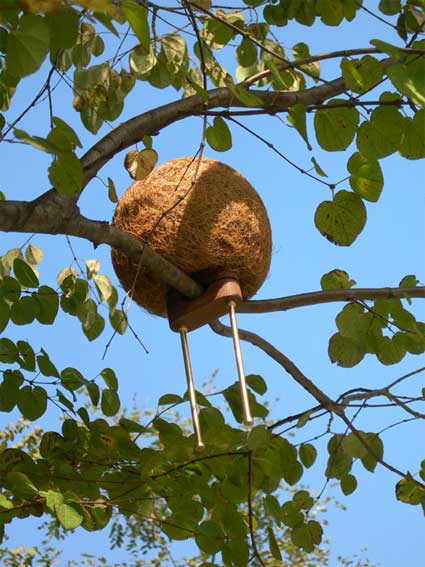 Call ⇔ Response, 2007, by tEnt [Tanaka Hiroya + Cuhara Macoto], with technical support by Kamiyama Yusuke
Call ⇔ Response, 2007, by tEnt [Tanaka Hiroya + Cuhara Macoto], with technical support by Kamiyama Yusuke
Call Response by Tanaka Hiroya and Cuhara Macoto (who are working under the collaborative title, tEnt) simulates a natural environment for birds in an effort to derive and explore how they communicate. Attempting to communicate beyond human language, the software was designed to record, generate and layer simulated bird calls. Here, the coconut shell is fitted with a small speaker which emits varying bird calls via a continuous algorithm-based signal.
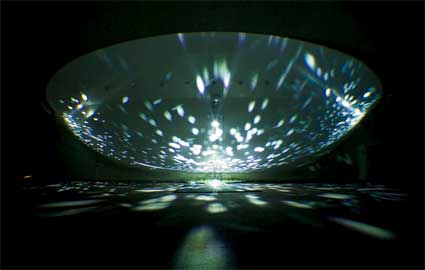 Bio Photon: Allelopathy, 2007, by Ando Takahiro
Bio Photon: Allelopathy, 2007, by Ando Takahiro
One of the most interactive works displayed was Bio Photon: Allelopathy by Ando Takahiro. As plants germinate and grow, photons are emitted from their leaves. They are invisible to our eyes but in his work Ando work visualizes the amount of photons via the discreet sensors which results in a hyper-sporadic display of flickering lights across the dome at light speed, if you will. Ando has intentionally set up two electric-current-generating for us, which upon touching, allow us to feel the currents that we couldn’t otherwise visualize.
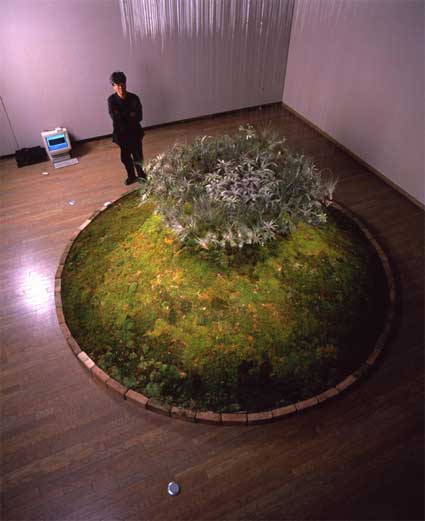 Paphio in My Life, 2007, by Fujieda Mamoru + Dogane Yuji
Paphio in My Life, 2007, by Fujieda Mamoru + Dogane Yuji
Dogane Yuji, a botanist who has focused his research on orchids, collaborated with composer Fujieda Mamoru for Paphio in My Life, where the inaudible sounds of plants are picked up by connected wires then converted to manifest a plant’s ‘voice.’ As plants respond to environmental stress, simulated by varying vibrations induced by the artists’ algorithmic program, the plant’s ‘voices’ vary accordingly. By broadcasting such a dialog, Dogane hopes to bring us closer to plants through this glimpse into their life.
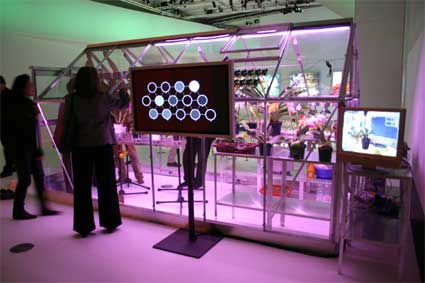 Orchisoid 03, 2003, by FUJIHATA Masaki + DOGANE Yuji
Orchisoid 03, 2003, by FUJIHATA Masaki + DOGANE Yuji
In Orchisoid 03, Dogane Yuji worked with renowned digital media artist Fujihata Masaki (some of his previous works include Unreflective Mirror and Beyond Pages) to better understand adaptation and homeostasis in plants. For this project, several orchids were again wired and set to experience a variety of vibrations from the shifting table they rest upon. The artists concluded that the physiology of the plants changed the same way as human brain wave patterns change in response to stress. And because the orchid’s wave-activity fluctuates in real time, rather quickly, Dogane recognized it as a sign of high-level information processing.
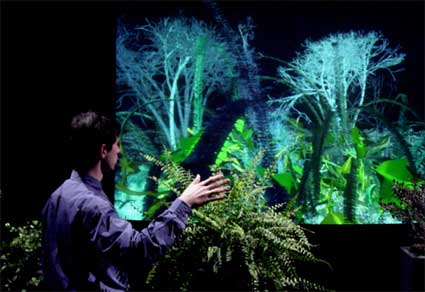 Interactive Plant Growing, 1992, by Christa Sommerer and Laurent Mignonneau
Interactive Plant Growing, 1992, by Christa Sommerer and Laurent Mignonneau
Also on display were Christa Sommerer and Laurent Mignonneau‘s installation Interactive Plant Growing from 1992. Touch the plants and watch the screen fill up with a digital cascade of the plant’s leaves; still a great example of physical action into digital realization.
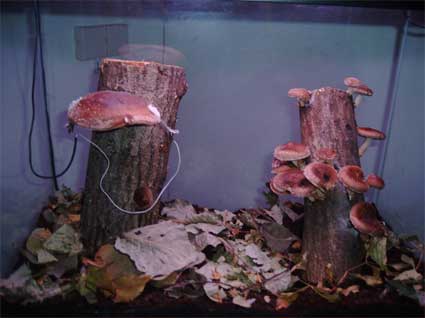 Ha, Ha! Your Mushrooms Have Gone, 2005, by Michael Prime
Ha, Ha! Your Mushrooms Have Gone, 2005, by Michael Prime
For a glance into the secret lives of mushrooms, Michael Prime affixed bio-sensors to various kinds of locally grown mushrooms to reveal a dialog we perhaps thought never even existed. From their docile setting in an aquarium, the bio-receptors broadcast the sounds of pulsating waves of noise through speakers in the installation space. The result- a surprising continuous drone that shifted tones rather sporadically revealing a brash, trance-like state of mushrooms- fascinating, surreal and surprising.
Until February 17, 2008 at the NTT InterCommunication Center[ICC].
All images Courtesy of ICC.
Fresh from our fruit & veggie aisle: Life Support Systems – Vanda, Night Garden, Post Patman, Upside Down Mushroom Room, Regulated Fool’s Milk Meadow, Living Letters, Real radish races on the net, Flora fights back, Plants racing for survival, etc

